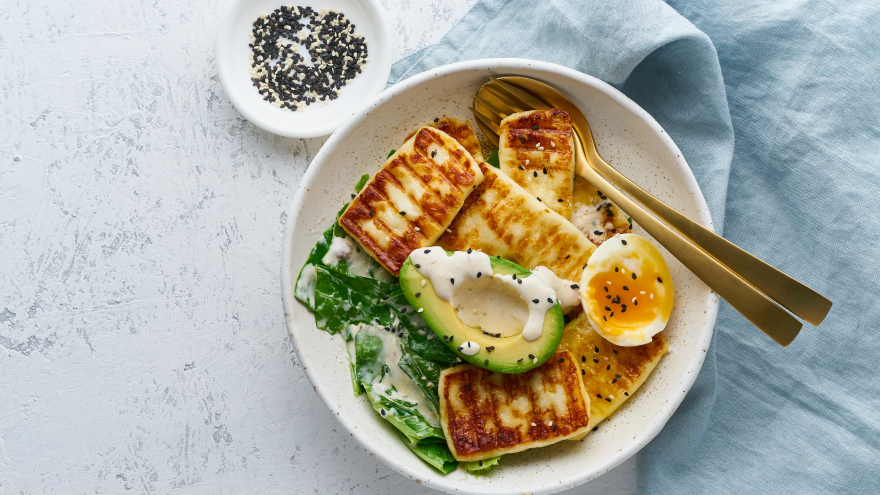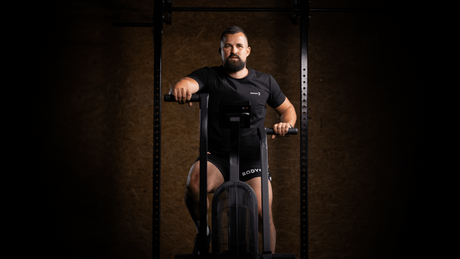The keto diet, or ketogenic diet, has become increasingly popular in recent years. Despite being unconventional compared to most other diets, many claim to have achieved their weight loss goals because of it. It’s also thought to help treat epilepsy and certain types of cancer. So, what exactly is the keto diet, how does it work and is it something you can incorporate into your health & fitness routine? We answer all your most commonly asked questions right here, so you can make an informed decision about whether or not you want to go keto.
What is a keto diet?
A keto diet is based on very high-fat food. More specifically, those who follow a keto diet should get most of their calories from fats (about 70-80%), a small part from proteins (10-20%) and as little as possible from carbohydrates (less than 10%). Normally, your body prefers to use carbohydrates (in the form of glucose) from food or stored glucose (in the so-called glycogen supply) as an energy source. When you limit carbs from your diet, it will need to find an alternative source of fuel. So, your body enters a state of ‘ketosis’, where it burns fat instead, potentially leading to weight loss.
Keto diet: how many carbs for ketosis?
Generally, to achieve ketosis, most people need to consume about 20-50 grams of net carbs per day. This can vary depending on factors such as your age, gender, activity level, and individual metabolism. To calculate net carbs, simply subtract the grams of fiber from the total grams of carbohydrates in a food item.
Keep in mind that everyone’s body is different, so it’s essential to listen to your own and adjust your carb intake accordingly when achieving ketosis. Some people may enter ketosis with a higher carb limit, while others may need to stay on the lower end. It’s helpful to track your food intake and monitor your progress to see how your body responds to ketosis and various carb levels.
The top 5 Body&Fit products to support a keto diet
The ‘keto’ your heart, handpicked from the Body&Fit range:

How long should you stay on a keto diet?
The length of time you should stay on a ketogenic diet can vary depending on your personal goals and how your body adapts to it. Here are a few approaches to consider:
Short-term keto diet (3-6 months)
Many turn to the keto diet as a quick way to lose weight. In this case, you might stay on the diet for a few months, achieve the results you’re looking for, and then slowly switch to a more balanced eating plan that’s easier to maintain in the long run.
Cyclical ketogenic diet
This approach is all about balance. You’ll follow a strict ketogenic diet for 5-6 days a week and then have a “carb refeed” day or two, where you eat more carbs. This allows you to enjoy the benefits of ketosis while still having some flexibility in your diet.
Long-term keto diet
Some people decide to stick with a keto diet for an extended period, even years, because they have medical conditions (like epilepsy) that respond well to the diet, or they’ve experienced significant weight loss / health improvements. If you’re thinking of going down this route, just make sure you’re eating a wide variety of nutrient-dense, low-carb foods and keeping an eye on your blood markers to avoid any potential health issues.
Is the ketogenic diet the best way to lose weight?
It is indeed true that most people will lose weight on the ketogenic diet. This, however, is partly due to water loss when the body starts to use glucose (sugar) reserves from the liver and muscles. As glycogen stores also retain moisture, you will tend to urinate more and hence lose weight. However, losing weight is not the same as losing fat. When we ran you through these 11 mistakes to avoid when losing weight, we saw that to lose fat you need to be in a calorie deficit for a prolonged period of time. Technically, this is of course also possible on a keto diet, although you have to pay attention to more factors than your carbohydrate intake alone.
Can I build muscle on a keto diet?
When you think about building muscle, protein is probably the first thing that comes to mind. What if you want to go after those gains on a ketogenic diet, where it’s all about consuming fat? Well, one study of men who exercise regularly showed that muscle mass increased after ten weeks on a ketogenic diet was followed by reintroducing carbohydrates for 2 weeks1. The most important thing to remember is to keep your calorie intake high. After all, you’re asking your body to make extra tissue and mass, which requires energy. You’ll still need to eat enough protein (on your plate and possibly supplemented with a shake) and of course train regularly. Our Body&Fit Whey Isolate XP is a good way to supplement your proteins without a lot of carbs. One serving of this shake contains only 0.5 grams of carbohydrates versus 25 grams of protein.
Is a keto diet safe?
While many have successfully followed a keto diet and reported positive outcomes, its safety and long-term effects are still being researched.
For most healthy individuals, the ketogenic diet can be safe when followed for a short period of time. It’s crucial, however, to remember that every person is different, and what works for one may not be suitable for another.
There are some potential drawbacks and risks associated with the ketogenic diet, particularly for certain groups of people or those with specific health conditions.
What are the side effects of the keto diet?
When you’re just starting a keto diet, it can be a drastic change to the way you eat. As it involves excluding a large group of food, it can be difficult to get enough vitamins, minerals and fibre. So, it is likely that you’ll experience some side effects. The general keto rule for carbohydrate consumption is a maximum of 50 grams per day. One banana already contains about 30 grams of carbs. This is why fruit is often skipped in the keto diet. There are, however, lots of important vitamins, minerals and fibre in fruits. The same applies to healthy carbohydrate-rich products such as whole meal bread, pasta and couscous. We always recommend following the guidance of a dietitian or doctor for this reason.
The main side effects of a keto diet are described by some as the flu, and the symptoms are indeed similar:
- Headache
- Fatigue
- Craving certain food
- Vertigo
- Difficulty concentrating
If you have any underlying health conditions, get in touch with your doctor or dietician before trying out any form of keto diet.
Keto diet: what to eat?
Make room for fats! A ketogenic diet consists mainly of:
- Meat: red meat, ham, sausage, chicken and turkey.
- Fatty fish: salmon, anchovies, tuna and mackerel.
- Eggs: preferably whole, pastured eggs or eggs rich in omega-3.
- Butter and cream: the full varieties.
- Cheese: cheddar, cast cheese, blue cheese and mozzarella are rich in calcium.
- Nuts and seeds: almonds, walnuts, pumpkin seeds, chia seeds, etc.
- Nut butters: peanut butter, organic cashew paste, organic hazelnut paste, organic almond paste, or go for a mix of peanuts, hazelnuts, cashews and almonds with this nut butter.
- Oils and fats: extra virgin olive oil, coconut oil, avocado oil and MCT oil
- Avocado’s
- Snacks: high-fat, low-carb snacks like keto nut bars and keto protein bars. These handy bars contain less than 2 grams of sugar and are rich in various B vitamins, vitamin E and vitamin C, among other healthy nutrients.
What should you not eat on the keto diet?
Simply put, all carbohydrate-rich foods are avoided as much as possible on a keto diet. These are the main ‘forbidden’ foods of the ketogenic diet:
- Sugared drinks: soft drinks, fruit juice, smoothies.
- Sweet snacks: pastries, ice cream, sweets.
- Cereals: wheat products, rice, pasta.
- Fruits: almost all fruits, except for some berries and strawberries in small quantities.
- Legumes: peas, kidney beans, lentils, chickpeas.
- Root crops: potatoes, sweet potatoes, carrots, parsnips.
- Sauces high in sugar: ketchup, sweet chili sauce.
- Alcohol.
The keto diet, summarised
The keto diet, or ketogenic diet, consists of a lot of fats and very few carbohydrates (up to 50g per day). Due to the shortage of carbs, the body goes into a state of ‘ketosis’, where it switches to burning fatty acids, instead of glucose, as an energy source. The keto diet can also be combined with an energy-restricted diet that allows you to lose weight. For most people, it is not a permanent diet because of the strict restrictions. We therefore recommend seeking the advice of a dietitian or doctor before and during a ketogenic diet.
In the meantime, our dedicated team of Nutrition Experts are always ready to answer your questions regarding nutrition, diets, and our leading range of sports performance and lifestyle products. Check out our fitness, supplements and workouts pages for further information and follow us @body&fit_official for fun fitness tips, advice, delicious recipes inspiration and more.



